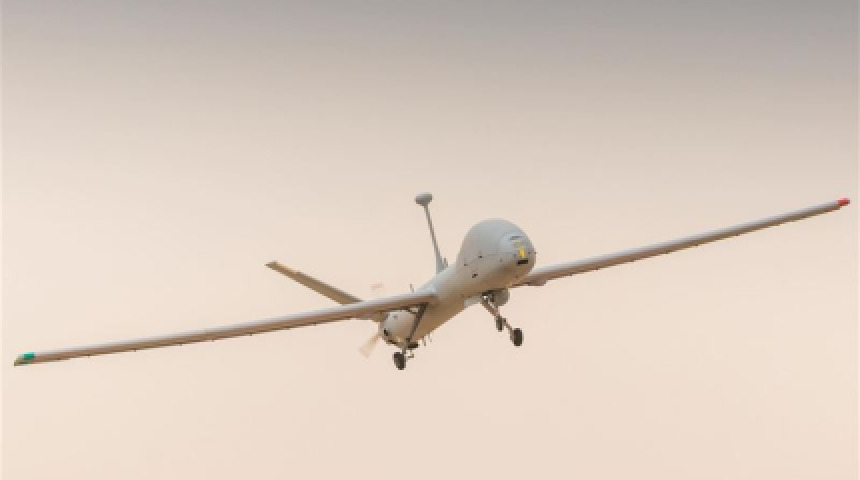印尼自製「KSOT」無人潛艦首度試射魚雷

KSOT原型艦在印尼以半潛航狀態成功發射Piranha輕型魚雷(圖片取自PT PAL Indonesia網站)
印尼國營造船廠 PT PAL 的國產無人潛艦 KSOT 原型,於 10 月 30 日在泗水完成半潛航發射 324 毫米 Piranha 輕型魚雷的試射,宣告該型平臺進入實作驗證階段。官方表示計畫在 2026 年底前交付約 30 艘,KSOT 長約 15 公尺、寬 2.2 公尺、吃水 1.85 公尺,最大航速 20 節、潛航深度可達 350 公尺,且採用高比例國產零件與商用現貨(COTS)組件以加速量產與降低成本。
PT PAL’s KSOT prototype successfully test-fired a 324 mm Piranha light torpedo in Surabaya on Oct 30. With plans to deliver ~30 units by end-2026, the 15 m × 2.2 m × 1.85 m craft (20 kt max, 350 m depth) emphasizes COTS components and increasing local content to speed production and lower cost.
印尼官方與業者都強調,KSOT 採用大量本土設計與 COTS 元件,一方面提高國防自主、縮短交付時程,另一方面也降低研發與單價門檻,使得大規模部署的可能性增加。PT PAL 並指出,後續將以 KSOT 經驗衍生更多無人水下/水面載具(UUV/USV)產品線。
Jakarta and PT PAL stress KSOT’s heavy use of local design and COTS parts — a dual approach to boost defence autonomy and speed production while keeping unit costs low — with plans to spin lessons into wider UUV/USV development.
測試面向與作戰概念:此次在半潛(semi-submerged)狀態下成功發射 324 mm 輕型魚雷,顯示 KSOT 已具備武裝打擊的初步能力。若按計畫批量部署,這類小型無人潛艦可用作 要衝巡防、機動封鎖、反登陸及海底監偵,特別適合巽他海峽、巴厘海等窄水道與島鏈環境的高密度防守。
The semi-submerged torpedo launch demonstrates initial strike capability. Mass deployment could enable chokepoint patrol, mobile denial, counter-landing and seabed surveillance — missions well-suited for narrow straits and archipelagic littorals like Lombok and Sunda Straits.
平台設計與性能要點
-
機體尺寸:長 15 m、寬 2.2 m、浮航吃水 1.85 m。
-
機動性:最大航速 20 節,潛航深度至 350 m。
-
武裝:已測試發射 324 mm Piranha 輕型魚雷(半潛發射驗證)。
-
生產策略:國產零件比重逾半、採 COTS 元件,後續將逐步提高在地供應鏈參與度。
Key specs: 15 m L × 2.2 m W × 1.85 m draft; 20 kt max speed; 350 m dive depth; validated semi-submerged launch of a 324 mm Piranha light torpedo; production strategy hinges on >50% local content and COTS usage.
戰術價值分析
KSOT 若如期批量化,將為印尼在戰略要道提供成本效益高、易於分散部署的水下節點。對鄰近國家來說,這類無人潛艦能改變區域的偵測盲點與水下威懾格局:低可偵測、小單位經濟化的攻防方式,對進出航道的水面艦艇構成持續威脅,也迫使對手加強聲納網、反潛巡航與海域監偵整合。
If mass-produced, KSOT could provide Indonesia with cost-effective, distributable underwater nodes — altering local ASW detection gaps and deterrence by proliferating low-signature, economically fieldable threat units and forcing adversaries to bolster sonar meshes and integrated maritime surveillance.
風險與技術挑戰
-
指揮與通聯(C2):UUV/無人潛艦在海下的 C2 受限,任務自律化、回收與安全控制是量產部署前的關鍵課題。
-
反制與滅失風險:大量 COTS 元件雖利於成本與交付,但在抗干擾、深海壓力與長期耐用度上需嚴格驗證。
-
倫理與區域穩定:武裝無人潛艦大規模部署可能提升誤判與緊張升級風險,區域國家應同步檢討規範與危機管控機制。
Practical hurdles: 1) C2 constraints undersea — autonomy, recovery and safety are crucial before fleet rollouts; 2) COTS tradeoffs — cost vs. resilience in pressure, EMI and long-term durability; 3) escalation/ethical risks — mass-arming UUVs raises miscalculation and crisis-management concerns.
產業鏈與在地化影響
PT PAL 若能透過 KSOT 提升在地零件比重,將有助印尼發展國防供應鏈、創造就業並帶動相關海洋自主系統(USV、UUV)的衍生產業;不過從原型到 30 艘量產與現場維保,仍需擴充造船能量、測試設施與專業維修/操作人員訓練。
Scaling up local content could catalyze Indonesia’s defence industrial base and spawn USV/UUV-related industries — yet transitioning from prototype to 30-unit production and sustainment demands shipyard capacity, test ranges and trained personnel.
結語
KSOT 的魚雷試射證明印尼在無人水下系統上邁出實質一步:透過 COTS 與在地化策略,印尼期望快速建構數量化的潛航節點以守護關鍵海峽。然而,要把原型成果轉為穩定戰力,仍須解決通聯/自主、耐久性測試與區域責任與危機管理等多項挑戰。對區域國家來說,KSOT 的量產化值得密切觀察,並應同步研擬反無人潛艦(C-UUV)能力與海下情監偵強化對策。
KSOT’s torpedo test marks a concrete step for Indonesia’s underwater autonomy ambitions: COTS-driven and locally-sourced scale can yield affordable nodes for chokepoint defence. Yet fielding true combat capability will require robust autonomy/C2, resilience testing and regional governance measures — issues neighbors must monitor and prepare countermeasures for.




回應文章建議規則: